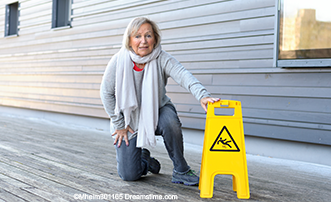Question: What can I do to reduce the risk of falling in my home?
Answer: Each year there are about 3 million emergency room visits and 1 million fall related hospitalizations among older adults. Fortunately, there are some simple steps you can take to reduce your risk of falling.
Talk to Your Doctor
When meeting with your health care provider, be sure to bring up the topic of fall prevention. Some medications have side effects or interact with other medications to increase your risk of falling. Your doctor can evaluate your situation and make changes as needed. Certain health conditions can also increase your fall risk. Your provider can help identify strategies to manage those symptoms safely.
Stay Active
With your health care provider’s approval, consider some low impact activities such as yoga, walking, water aerobics, or strength training. This type of activity reduces your fall risk by improving your strength, balance, coordination, and flexibility. If you are worried that you will fall while engaging in physical activity, talk to you health care provider to see what activities they may recommend.
Choose the Right Shoes
Consider changing your footwear as part of your fall prevention plan. High heels, floppy slippers, and shoes with slick soles can contribute to a fall. Walking in stocking feet can have the same effect. Ideally, wear properly fitting, sturdy, flat shoes with nonskid soles. Sensible shoes have the added benefit of potentially reducing joint pain.
Check Your Home
Look around your home and try to identify potential fall hazards. Make sure you have clear walkways throughout your house and remove potential tripping hazards such as electrical cords, phone cords, and clutter on the floor. Avoid using throw rugs and use double sided tape to secure larger rugs if removing them is not an option. Store necessities within easy reach and clean up spills right away.
Light Up Your Life
Having adequate lighting throughout your home will make it easier to see potential tripping hazards. Place nightlights in your bedroom, bathroom, and hallways. Have a lamp within easy reach of your bed (and a flashlight for emergencies). Be sure to turn lights on before moving around your home, especially when going up and down stairs.
Gear Up with Assistive Devices
Assistive devices around the home are a great way to help in avoiding potential fall hazards. Handrails in stairways and hallways, nonslip treads on bare wood steps, a raised toilet seat, grab bars in the tub/shower, and a shower chair with a handheld shower nozzle can all aid in reducing your risk of falling. They provide support and stability as you move around your home.
Sources: cdc.gov & mayoclinic.org




